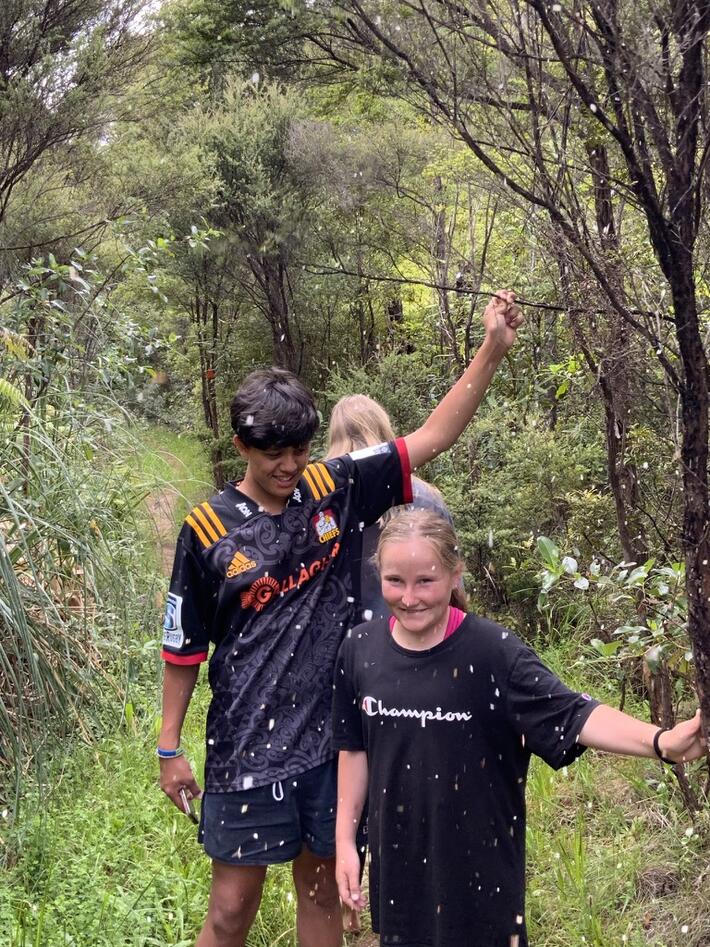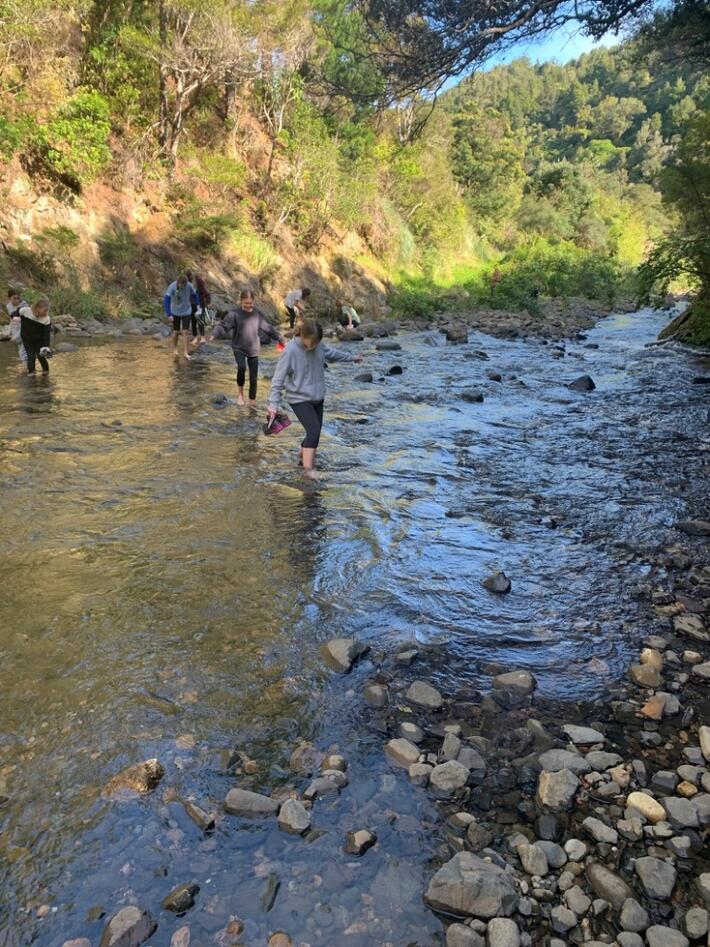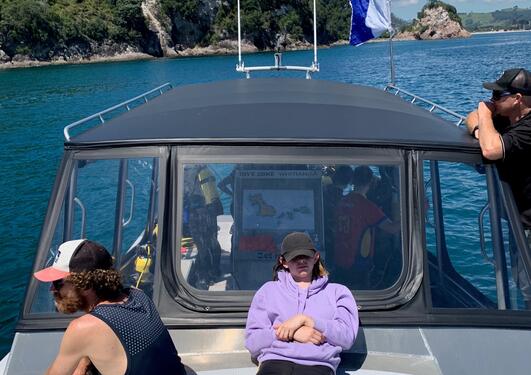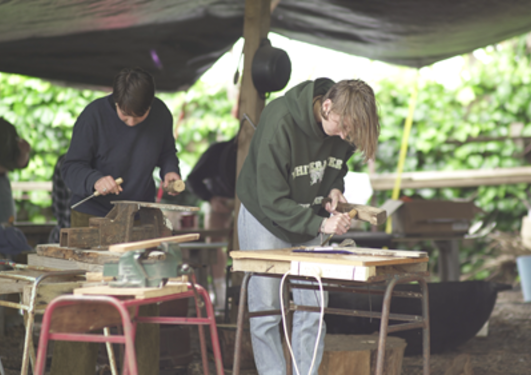Seasonal bush walks with young Coromandel kiwis
Kiwis (self-reference used by New Zealanders) refer to their native subtropical forest with its tree giants and unique flora and fauna somewhat depreciatively as bush.

Main content
Paradoxically, the monoculture pine plantations which have replaced the indigenous vegetation cover are referred to as forests. Over time, as a non-kiwi, I have learned that this up-side-down value system has deep roots in New Zealand’s colonial past. Many key aspects of the contemporary kiwi psyche have their origins in the global north. This is especially the case in the context of seasonal and cultural markers and the natural environment. Christmas and the glorification of the Christmas tree and snow etc (at a time of the year when New Zealand is sweltering in summer heat) is possibly the most striking example. Mostly unconsciously, exotic aspects of life are esteemed and subliminally treasured. Are children’s observations any different and how do they relate to their environment? How do young kiwis experience seasonal changes in nature? After all, they learn from their parents and peers and more so than ever before, they are influenced by (mainly US-based) media.
To find a more nuanced insight into these questions I devised a plan with Te Puru school teacher Izaac Garmey: over the course of a year we would take the Te Puru School ‘seniors’ (Year 8) on monthly walks on the Te Puru track. We were curious to see what they would observe and report. The students were encouraged to document ‘everything and anything’ they notice, ranging from how the air feels on the skin to the plants they find interesting.
The part of the track between the road end and the actual start of the track is dominated by non-native vegetation. Perhaps not surprisingly this is where the children picked up on the greatest number of seasonal changes related to vegetation. This part is followed by a bridgeless crossing of the Te Puru stream. While in most places no more than knee deep, this stream rapidly changes depending on the rainfall. Consequently, the stream was also among the key observations. Other changes experienced included the water temperature and the how slippery the stream bed was. In winter when the water was cold there was less algae growth on the rocks. On our last walk before the summer holidays the children found a shampoo bottle by the stream which also shows seasonal changes in the way locals make use of the stream.
The student’s own ‘seasonal’ change over the course of the year also meant that they were occupied with each other and their adolescent state. The majority of children needed to be alerted to environmental seasonal changes and cues. Nonetheless, key observations included flowering plants such as a native orchid species, forst funghi, ground cover including mosses, the way the air feels and smells, humidity (“it feels wet”), water temperature, the sound of the stream, bird life, insect presence and the light/the sun. Only through the comparison made possible through monthly returning to the same place did it become possible for the students to detect variation related to the time of the year. One experience on our last walk struck me: this was the time when the Mānuka trees were in flower, a small white short-lived flower. A couple of students felt reminded of snowfall at Christmas, something they only know from TV. As they were shaking the tree and the Mānuka flower petals were falling they were wishing everyone merry Christmas.
What is the key lesson learned from these monthly ‘bush’ excursions? Apart from the gathering of data for CALENDARS, I like to think that this was a hugely valuable experience with immense potential. In an ideal world this is something that should be part of the primary/intermediate curriculum for reasons that go far beyond the immediate experience. How else would it be possible to (re-)connect people with their environment and the natural rhythms surrounding them. Can there be a better place and time in young people’s lives to instil an awareness? Is this not one of the key lessons that children must learn in order to identify with a place and truly call it home? Especially in this globalised world the connection with the local conditions must be nourished and an awareness sharpened.



